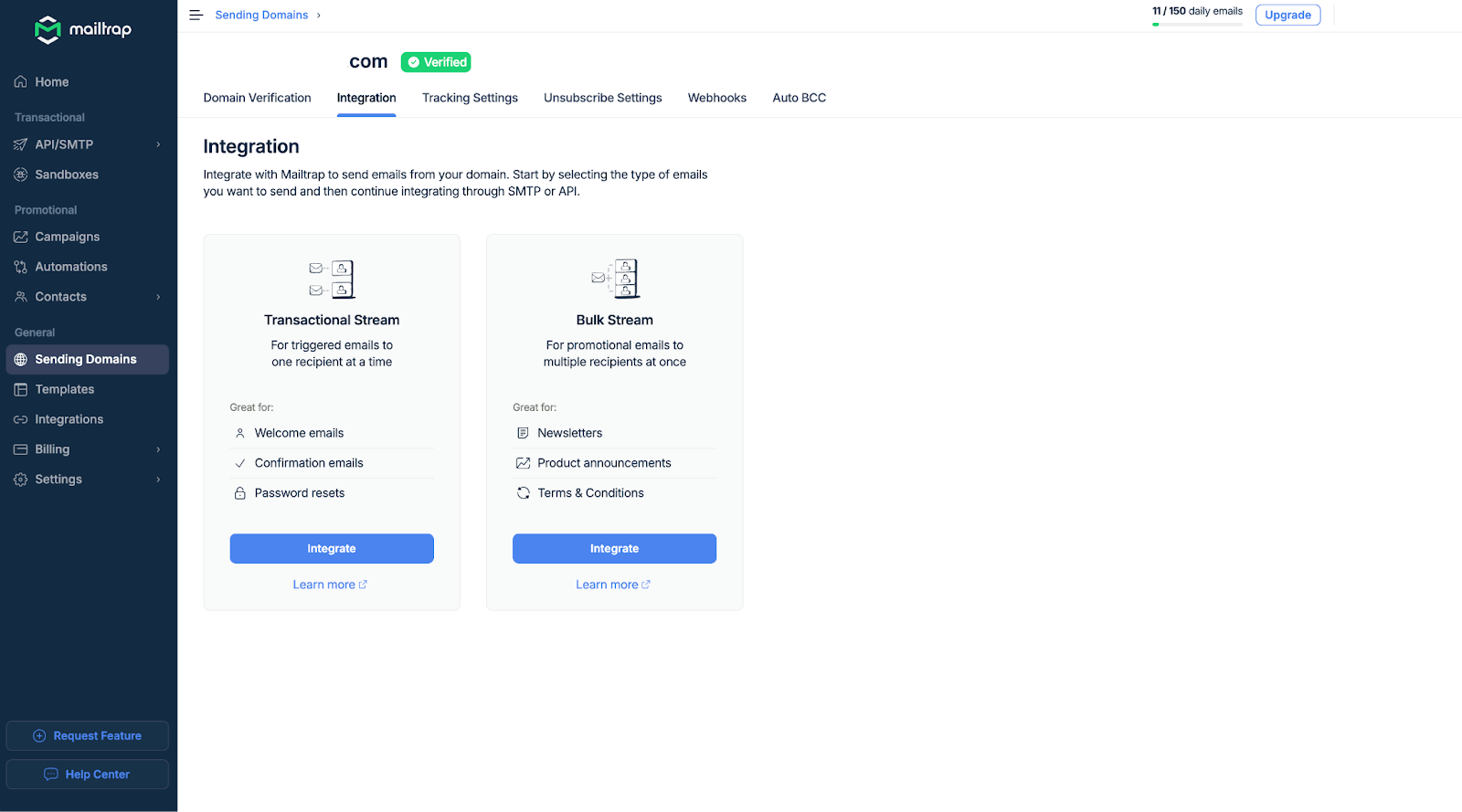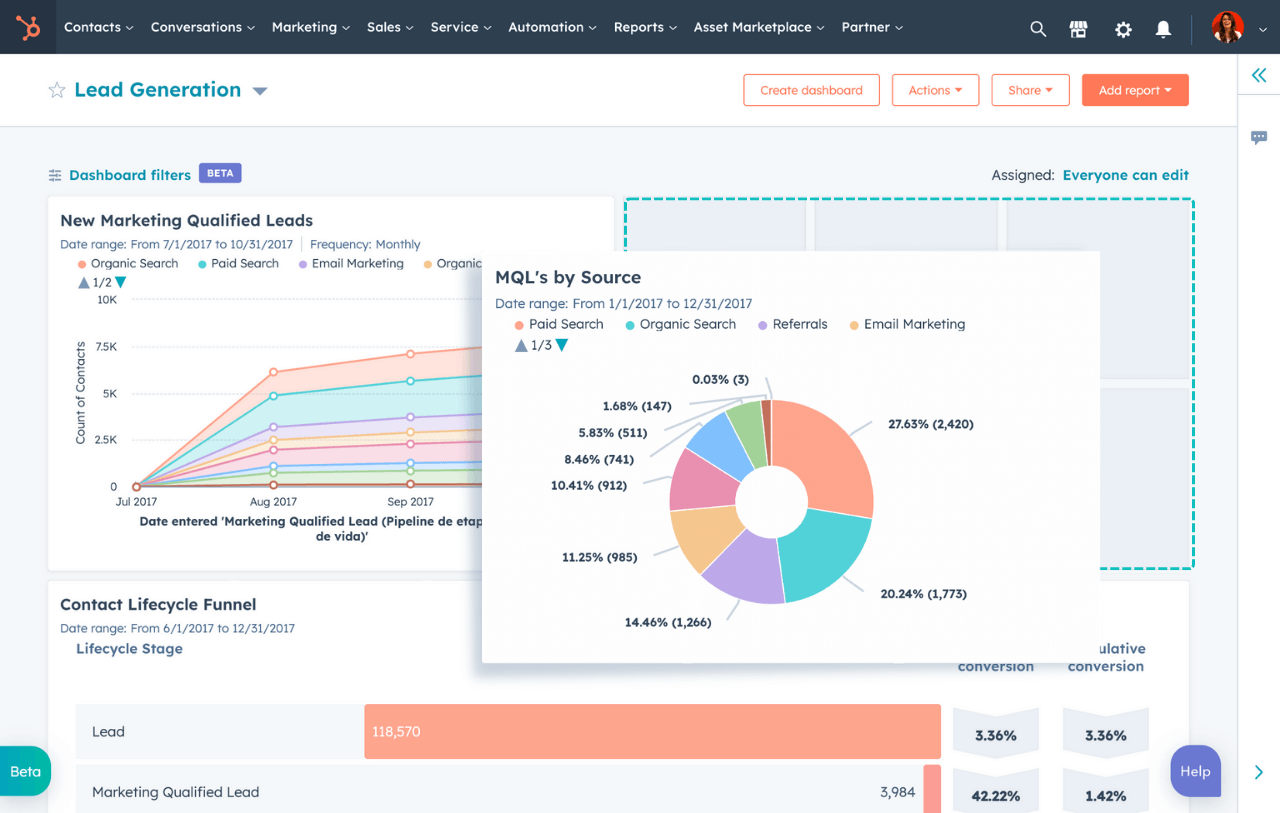Chances are you were once interested in SendGrid for its reputation as a transactional email service or SMTP email service provider. So were I and many SendGrid users.
While it’s true that big-name brands are still putting aside leaving the platform, SendGrid has been a questionable choice for small to medium businesses (SMBs) for a while now. Read on to learn about the best SendGrid alternatives and what they have to offer.
Disclaimer: This article evaluates SendGrid alternatives, including Sender, which our company owns. Assessments are based on research, industry standards, and user feedback. No commissions are earned from links in this article.
SendGrid Alternatives Comparison Table
Now that we’ve agreed it’s time to look for a SendGrid alternative, let’s quickly compare each of the top options.
| Cost | Free Plan | Best Feature | |
| Sender | Starts at $7/month | Yes | Automation |
| Postmark | Starts at $15/month | Yes | Message streams |
| Amazon SES | $0.10/1000 emails | No | Pay-as-you-go pricing |
| Mailgun | $15/month | Yes | Inbox placement tracking |
| Mailtrap | $15/month | Yes | Dedicated sending streams |
| Mailchimp Transactional Email | $20/block* | No | Webhooks |
| HubSpot | $11/month | Yes | CRM solution |
* One block equals 25,000 email sends + users have to pay for their Mailchimp plan separately.
7 Best SendGrid Alternatives
If you’re searching for a SendGrid equivalent, you should consider the following tools:
- Sender – Best Drag and Drop Email Platform;
- Postmark – Best Transactional Email API Service Provider;
- Amazon SES – Cheapest Dedicated IP Addresses;
- Mailgun – High Email Delivery with Easy Integration;
- Mailtrap – Flexible and Customizable Email API Provider
- Mailchimp Transactional – Best for Transactional Emails;
- HubSpot – Comprehensive Email Marketing Automation
Sender — Best Drag and Drop Email Platform
Sender is at the top of the list and a great SendGrid alternative too, and for a good reason—it’s a powerful email marketing and SMS marketing tool with an intuitive email builder.
Sender pricing: Starts at $7/month for up to 1,000 subscribers and 12,000 emails/month | Generous Sender Free Plan available.
Sender offers a powerful drag-and-drop editor with a library of responsive templates, plus readymade design blocks. The UI is simple to navigate even for beginners.
Plus, it has all the features needed for omnichannel campaigns and ecommerce marketing: a drag-and-drop email design tool, SMS/email marketing automation builder, pop-up creator, and smart segmentation. You get all the bells and whistles of a premium email marketing suite for less than $10 a month.
On top of that, Sender supports transactional emails through a straightforward API that makes integration with your website or app hassle-free. Send order confirmations, password resets, and other automated messages while keeping full control over branding and personalization.
Deliverability is also a strong point. Sender uses SPF, DKIM, and custom domain authentication to maintain a solid sender reputation. It takes care of IP warmups, list hygiene, and if you want absolute control and reliability—they offer dedicated IPs on their Professional plan as well.
All in all, Sender is a fine email marketing tool you can scale with without expecting any hidden costs, making it one of the best SendGrid alternatives you can find today.

Pros
- A/B testing. Boost performance by testing different subject lines, content variations, and send times to uncover what drives the most engagement;
- Generous free plan. Includes up to 2,500 subscribers and 15,000 emails per month, giving you access to nearly all premium features at no cost;
- Full access to automation & segmentation. Every plan includes email automation workflows and advanced audience segmentation tools to personalize campaigns;
- Beginner-friendly. With its intuitive interface and guided onboarding, Sender is designed to help newcomers get started quickly and confidently.
Cons
- Branding on free plan. Emails sent on the free plan include Sender’s logo, which might make your marketing campaigns look less professional.
Pricing
One of Sender’s biggest advantages is its pricing—clear, flexible, and more affordable than most competitors.
- Free tiers: $0 (2,500 contacts—15,000 emails/month);
- Standard: $7/month (1,000 contacts—12,000 emails/month);
- Professional: $14/month (1,000 contacts—24,000 emails/month);
- Enterprise: Custom price.
Postmark — Best Transactional Email API Service Provider
Postmark is a great transactional email delivery platform and is designed with tech startups in mind. And is one fine SendGrid alternative at that, too.
Postmark pricing: Starts at $15/month for unlimited contacts and up to 10,000 emails/month | Postmark Free plan available.
During my time with Postmark, one of the things I really liked was the pre-made email templates. There’s a bunch of them, they look professional, and they make sending messages so much quicker.
Another great thing about Postmark is message streams. This keeps emails from getting mixed up and helps improve both traffic management and deliverability.
On top of that, Postmark’s SMTP (or Simple Mail Transfer Protocol) relay server is super reliable, which explains its superb deliverability rate (which stayed strong at 93%, same as reported by folks at EmailToolTester) and emails reaching clients without any noticeable hiccups.
That said, it’s worth noting that this SendGrid alternative separates transactional and bulk email infrastructure for reliability.
While it makes it ideal for password email solutions (such as password reset emails) and other critical notifications, Postmark doesn’t have the standard campaign-building tools you might expect from platforms like Sender or Mailchimp. Small nuisance, but one worth keeping in mind.

Pros
- Excellent deliverability. Ensures your transactional and marketing emails consistently reach inboxes on time, minimizing bounce rates and delivery issues;
- Developer-friendly API and documentation. Offers clear, well-structured API docs that make integration fast and hassle-free for developers;
- Reliable customer support. Provides responsive, knowledgeable assistance to help troubleshoot issues and optimize email performance;
- Great template selection. Features a range of professional, customizable templates to simplify email design and maintain brand consistency;
Cons
- No built-in CRM. Lacks native customer relationship management tools, requiring integration with third-party platforms for advanced contact tracking;
- Higher per-email costs than bulk providers. Pricing is on the higher side compared to bulk email services, making it less ideal for large-scale campaigns;
- Limited marketing features. Focuses primarily on transactional email delivery, offering fewer tools for automation, segmentation, and campaign management;
Pricing
Postmark offers easy-to-understand, usage-based pricing with lower overage rates on higher tiers. Keep in mind that, unlike most transactional email providers, it doesn’t limit contact count.
- Developer (Free): $0 (100 emails/month)
- Basic: $15/month (10,000 emails/month, extra emails $1.80 per 1,000);
- Pro: $16.50/month (10,000 emails/month, extra emails $1.30 per 1,000);
- Platform: $18/month (10,000 emails/month, extra emails $1.20 per 1,000).
Read a detailed comparison between Postmark and SendGrid
“It’s a great SMTP provider that is easy to set up as well as great delivery and clean IPs. On top of that, it also has a DMARC reporting tool which I like and recommend to any beginner or non-techy person out there. Support is great and quick to reply to any issues you might have.”
— Dame from G2
Amazon SES — Cheapest Dedicated IP Addresses
Amazon SES, standing for Simple Email Service, caters to businesses seeking a reliable and affordable solution for service emails. No surprise it’s trusted by industry giants like Reddit and Netflix.
Amazon SES pricing: One email is priced at $0.10 per 1,000 messages, with attachment data charged at $0.12 per gigabyte. | Free plan available.
In my experience, Amazon SES might not have all the flashy marketing features other platforms offer, but it definitely makes up for it with the essentials. The Virtual Deliverability Manager is great for automated inbox optimization, and the Mailbox Simulator makes testing different scenarios super easy.
What really stands out to me is how simple and transparent the pricing of this SendGrid alternative is. It’s fully pay-as-you-go, so you only pay for what you actually use it for—no unnecessary overpaying for things that get left untouched, right, MailChimp?
SES also supports SPF and DKIM authentication, which helped my emails reach inboxes reliably, and the activity and reputation tracking tools gave me clear insight into performance.
With its robust infrastructure and focus on reliability, Amazon SES remains a compelling choice for businesses prioritizing transactional emails and looking for a solid SendGrid replacement.

Pros
- Affordable pricing. Extremely cost-effective, especially for high-volume senders, since you only pay for what you use with no hidden fees;
- Superb deliverability. Known for its strong sender reputation and reliable inbox placement when properly configured;
- Virtual Deliverability Manager. Automates inbox optimization and monitoring, helping ensure emails land in recipients’ inboxes rather than spam folders;
- Flexible sending options. Supports multiple delivery methods—API, SMTP, or console—giving developers plenty of control over how emails are sent.
Cons
- Steep learning curve. Initial setup can be tricky, with domain verification, DKIM/SPF settings, and configuration requiring some technical know-how;
- Limited marketing tools. Lacks built-in campaign builders, templates, and A/B testing features found in more marketing-focused platforms;
- Basic support. Customer service is mostly documentation-based, with slower response times and limited live assistance options.
Pricing
Amazon SES offers a pay-as-you-go pricing model with no minimum fees or flat rates. You pay only for the emails you send and receive, along with any additional features you use.
- Free Tier: Up to 3,000 emails per month for the first 12 months after account creation;
- Email Sends: $0.10 per 1,000 emails;
- Attachments: $0.12 per GB of data.
“It’s a cloud-based email service that’s helpful because it’s cost-effective, reliable, and easy to use. It can help you send and receive emails at scale, and it integrates with other AWS services.”
— Chinna from G2
Mailgun — High Email Delivery with Easy Integration
Mailgun is used as a white-labeled solution by many apps and startups. It offers a comprehensive suite of email deliverability tools, including inbox placement, verification, and transactional SMS capabilities.
Mailgun pricing: Starts at $15/month for unlimited contacts and up to 10,000 emails/month | Mailgun Free plan available.
I’ve been impressed with how smoothly Mailgun connects with other email marketing services, letting non-technical users get email marketing campaigns running quickly through its drag-and-drop editor. The InboxReady toolkit has been particularly useful, helping boost deliverability with pre-send checks, email verification, and invalid email addresses clean-up.
Of course, it’s not all rainbows and sunshine. It lacks built-in email marketing features like automation or templates. Also, its interface can feel a bit technical for beginners, requiring some familiarity to get the most out of its tools.
All in all, I’d say Mailgun works best for developers or teams that primarily need a dependable transactional email API rather than a full marketing suite.

Pros
- Excellent API & developer tools. Robust API with powerful webhooks and SDKs, giving developers full control over sending, tracking, and event handling;
- High deliverability rates. Strong infrastructure and reputation management ensure consistent inbox placement when domains and authentication are properly configured;
- Detailed email analytics & tracking. Comprehensive logs, real-time metrics, and event insights help monitor performance, troubleshoot issues, and optimize deliverability.
Cons
- Steep learning curve (for non-technical users). Setup requires DNS configuration, authentication, and API integration, which can be challenging without technical experience;
- Advanced features locked behind premium plans. Dedicated IPs, extended log retention, and premium support are only available on higher-tier subscriptions;
- No built-in landing pages or forms. Focused solely on email delivery, Mailgun lacks marketing tools like drag-and-drop builders or signup form creation.
Pricing
Mailgun offers a flexible, developer-focused pricing structure designed to scale with your email needs. Here’s a breakdown of their plans:
- Free: $0/month (100 emails/day, 1 custom domain, 1 inbound route);
- Basic plan: $15/month (10,000 emails/month, 5 inbound routes, 1 day log retention);
- Foundation: $35/month (50,000 emails/month, 1,000 custom domains, 5-day log retention);
- Scale: $90/month (100,000 emails/month, SAML SSO, 5,000 email validations, 30 days log retention);
- Enterprise: Custom pricing (for high-volume senders, includes dedicated IP pools, advanced analytics, and 7-day message retention).
“Mailgun helps me verify my email list to ensure valid email addresses. This is important for email deliverability and for ensuring my clients receive the information they need from me.”
— Jeanette from G2
Mailtrap — Flexible and Customizable Email API Provider
Mailtrap is an email delivery platform built for developers and product teams that need a reliable way to send transactional and bulk emails at scale.
Mailtrap pricing: Starts at $15/month for 10,000 emails; Free plan: 4000 emails per month and 100 contacts (free forever, no credit card required)
With dedicated sending streams, real-time analytics, and proactive deliverability features, it’s one of the best developer-friendly SendGrid alternatives out there.
During our testing, we appreciated how simple it was to integrate Mailtrap using either SMTP or its RESTful Email API. Official SDKs are available for major languages like Node.js, Python, PHP, Ruby, and Elixir — making implementation smooth regardless of your stack.
What stood out most was Mailtrap’s use of dedicated sending streams to separate transactional from bulk traffic. This helps protect sender reputation and gives teams control over email deliverability.

The analytics experience was another highlight. Mailtrap offers helicopter-view dashboards, drill-down reports, and mailbox-provider stats (Google, Microsoft, etc.), all with optional color-coded indicators to spot weak metrics quickly. And while the free plan only keeps logs for 3 days, they’re highly detailed and easy to navigate.
For anyone working in VS Code or with an AI assistant, Mailtrap’s custom MCP servers let you send emails right from your IDE, a thoughtful touch for technical teams.
Pros
- High deliverability infrastructure. Dedicated streams for transactional and bulk sending help protect IPs and boost inbox placement;
- Real-time analytics. Includes provider-level stats, drill-down reports, and spam complaint monitoring;
- Developer-first integrations. RESTful API, SMTP support, official SDKs, and access to MCP servers for sending from IDEs or AI tools;
- Reliable support. 24/7 expert assistance available on higher-tier plans, plus help with setup and deliverability tuning.
Cons
- Limited out-of-the-box integrations. Compared to marketing platforms, Mailtrap offers fewer native integrations with external tools;
- Short log retention on free plan. Email logs are only stored for 3 days unless you upgrade;
- Not built for advanced marketing automation. Lacks tools like complex workflow builders, CRM sync, or segmentation logic.
Pricing
Mailtrap offers its users four different pricing plans:
- Free: This plan lets you send 4,000 emails per month and have up to 100 contacts.
- Basic: The basic plan costs $15/month and lets you send 10,000 emails and have up to 50,000 contacts.
- Business: This is the most popular plan, which costs $85, comes with a sending limit of 100,000 emails per month, and lets you have up to 750,000 contacts.
- Enterprise: This plan costs $750/month and lets you send 1,500,00 emails in total to up to 2,500,000 contacts.
You can increase the sending limits for each plan using a sliding scale so that it fits your sending needs better.
“We use Mailtrap to send high volumes of transactional emails reliably and maintain clean separation from our bulk infrastructure.”
Mailchimp Transactional — Best for Transactional Emails
Mailchimp Transactional Email (formerly Mandrill) offers a user-friendly SMTP service, which makes managing and sending transactional messages a walk in the park. And if you’re looking for a transactional email service provider to replace SendGrid, look no further.
Mailchimp Transactional pricing: Prices start at $20/block, where one block equals to 25,000 email sends.
During my time testing this SendGrid alternative, I’ve found Mailchimp Transactional Email to be surprisingly powerful. It offers features like dynamic content, conditional rules, webhooks, click tracking, and A/B testing.
Pricing is straightforward too—based on blocks of 25,000 emails, with costs per block decreasing as your sending volume grows. That said, compared to other options on this list, it’s not quite as user-friendly, as Mailchimp for transactional emails are more suited for developers or teams with one at hand.

Pros
- Integrated with Mailchimp ecosystem. If you’re already using Mailchimp for marketing/emails, having transactional under the same vendor reduces fragmentation;
- Top-notch email deliverability. Leverages Mailchimp’s infrastructure, reputation management, and IP pool to help get emails into inboxes;
- Seamless API + SMTP support. Gives developers flexibility in how you integrate transactional sending.
Cons
- Requires a Mailchimp Marketing plan. You can’t use the transactional service standalone. Instead, it functions as a paid add-on to your main Mailchimp account;
- Developer-oriented. It’s geared toward users comfortable with APIs, HTML templates, and integration work; non-technical users may find setup and management challenging;
- No true free plan. The free or trial options are limited (e.g., 500 sends) and you must move to paid tiers for ongoing use.
Pricing
Mailchimp’s transactional email pricing is based on blocks of 25,000 emails, so you purchase credits in advance and each block covers that number of emails. The cost scales with volume, making it easy for businesses to manage expenses as their sending needs grow.
- 1–20 blocks (up to 500k emails): $20 per block;
- 21–40 blocks (500k–1M emails): $18 per block;
- 41–80 blocks (1M–2M emails): $16 per block;
- 81–120 blocks (2M–3M emails): $14 per block;
- 121–160 blocks (3M–4M emails): $12 per block;
- 161+ blocks (4M+ emails): $10 per block.
“Mailchimp Transactional Email (Mandrill) is well suited for basic automated emails that a business needs to send to their clients when their clients purchase a product or service, appointment/reservation reminders, etc. I would not use it for any sort of one-off email or really any sort of marketing purposes at all.”
— Brandon from TrustRadius
HubSpot — Comprehensive Email Marketing Automation
HubSpot offers one of the most extensive ranges of features, which is interesting for any size business looking to diversify its email marketing efforts. However, their SendGrid cost comparison shows similar pricing, making it unaffordable for many small business owners.
HubSpot pricing: Starts at $11/month for up to 1,000 contacts and up to 5,000 emails/month | HubSpot Free plan available.
Unlike SendGrid, I’ve found HubSpot to be much more than just a transactional email solution. It’s a full-fledged marketing platform with everything I need in one place—CRM, lead generation, social media marketing, content management, analytics, you name it.
Its email marketing tools are solid, with visual workflow automation, deep customer insights, and some options for dynamic content (like personalized modules and smart content), making it easily one of the best SendGrid replacements you can have without needing to juggle multiple apps.
That said, the pricing jumps steeply from the entry plan, and contact-based fees can add up quickly as your lead volume grows.

Pros
- Unified platform. Marketing, sales, and service teams share the same contact database, improving customer experience and eliminating repeated requests;
- Useful free plan. Includes CRM, basic email marketing, forms, and landing pages, offering real value without a paid subscription;
- Educational resources. HubSpot Academy certifications and the annual INBOUND conference provide ongoing learning and industry-recognized expertise.
Cons
- Steep price jump. Costs rise sharply from Starter to Professional, and contact-based pricing increases with lead volume;
- Limited customization. Some workflows and processes must adapt to HubSpot’s structure;
- Reporting on top tier only. While not needing to shell out an additional $200/month for a reporting dashboard is an improvement, being able to access it only under a $923/month plan doesn’t feel like one.
Pricing
HubSpot’s email marketing pricing is tiered based on plan level and number of contacts, making it scalable for businesses of all sizes.
- Free: $0 (1,000 contacts — 2,000 emails/month);
- Starter: $11/month (1,000 contacts — 5,000 emails/month);
- Professional: $890/month (2,000 contacts — 10,000 emails/month).
“Overall I have a great experience with Hubspot Marketing. I do a mixture of operations and marketing duties during my day and my experience in the marketing module has helped me in areas of operations as well. The social content scheduling aspect of it has been seamless!”
— Allie from Capterra
SendGrid Competitors Price Comparison Table
| 5,000 contacts | 10,000 contacts | 20,000 contacts | |
| Sender | $23/month | $40/month | $82/month |
| Postmark | Starting at $15/month, you can send to unlimited contacts | ||
| Amazon SES | $0.10/1000 emails and unlimited contacts | ||
| Mailgun | Starting at $15/month, you can send to unlimited contacts | ||
| Mailtrap | $15/month | $15/month | $20/month |
| Mailchimp Transactional Email | $20/block, where one block equals 25,000 email sends | ||
| HubSpot | $1,140/month | $3,600/month | $3,700/month |
Email Marketing Platforms Cost Calculator
Choosing the right email marketing platform that matches your audience size, essential features, and budget can be challenging and time-consuming.
That’s why we created our price calculator—a quick and simple way to compare plans and find the best, most cost-effective option for your business.
Free SendGrid Alternatives: Free Plans and Limits
| Platform | Emails per month | Subscribers | Available features |
| Sender | 15,000 | Up to 2,500 | Drag-and-drop editor, automation, segmentation, transactional emails, landing page builder |
| Postmark | 100 | Unlimited | SMTP relay + API access, webhooks, analytics, templates, and full transactional features |
| Mailgun | 3,000 | Unlimited | Transactional email API, logs, basic analytics |
| Mailtrap | 4,000 | Unlimited | Webhooks, templates, bulk stream |
| HubSpot | 2,000 | Unlimited | Drag-and-drop builder, basic segmentation, light CRM |
You may also find these articles worthy of your attention:
- Flodesk Review 2025: Visual Email Builder for Creators
- Elastic Email Review 2025: Is This Budget Email Tool Worth It?
- Zoho Campaigns Review 2025: Worth It or Not?
FAQs
Are there any downsides to using SendGrid?
Yes, SendGrid has several flaws. Those include expensive pricing, restrictive 3-day email logs, limited marketing channel options requiring costly add-ons, declining customer support quality, and potential blacklisted IP issues that send emails to spam.
Many businesses find better value and features with SendGrid alternatives like Sender, which offers comprehensive marketing tools, dedicated IPs and transactional email templates at more affordable rates.
Best SendGrid alternatives for developers?
The best SendGrid alternative developers can find today is Amazon SES. Not only does it offer a highly cost-effective solution with pay-as-you-go pricing and robust APIs, but it also provides tools like the Virtual Deliverability Manager to optimize inbox placement and ensure reliable email delivery.
However, for development teams who want both technical flexibility and powerful automation without switching between multiple email marketing services, there’s no better solution than Sender.
Best SendGrid alternatives for marketers?
Sender stands out as the top SendGrid alternative for email marketers. Offering intuitive drag-and-drop email builders, state-of-the-art segmentation, and a user-friendly interface, on top of a built-in landing page builder, Sender’s package is hard to beat.








